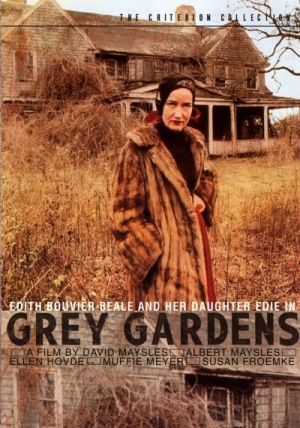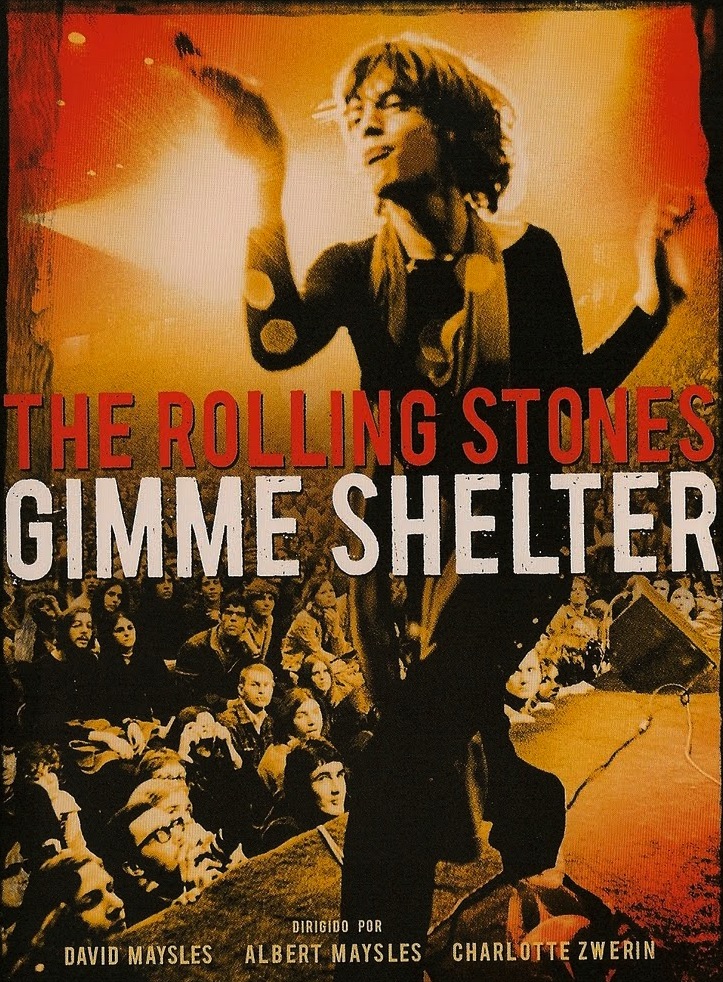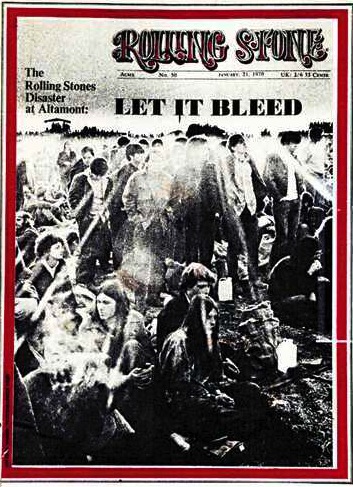FRESH AIR
THE NEW YORKER: In three features that he made between 1968 and 1975—”Salesman,” “Gimme Shelter,” and “Grey Gardens”—Al, working with his brother David (who recorded sound), revolutionized documentary filmmaking. (“Grey Gardens” opens today at Film Forum, in a new restoration.) At a uniquely flamboyant and performative moment in American life, the Maysles brothers collaborated closely with people who were performing for their intended audiences—and for the Maysleses themselves. The Maysles brothers’ underlying obsession was, in effect, something that wasn’t there: the barrier between performance and life. They saw and captured the magic moment when the performer made electrifying, charismatic contact with the audience. For the Maysleses, the performer and the audience are as inseparable as the participants in a documentary and the documentarians. That’s why, in their easy-going, humanistic, and graceful way, the Maysleses were among the exemplary modernists of the era, including themselves in the onscreen action and making their presence felt, physically as well as ethically, as audaciously as any avant-gardist. MORE
GRANTLAND: 1970’s Gimme Shelter complicated that transparency. It was supposed to be a Rolling Stones tour documentary, but when a Hells Angel stabbed Meredith Hunter to death at the free December 1969 Altamont show, the movie became something closer to a therapy session. The Maysleses sit in an editing suite with Mick Jagger and Charlie Watts and everyone else and film the band watching the footage from the tour, which produces a film within the film. Songs from the tour’s date at Madison Square Garden, including the immortalization of Tina Turner (the Stones’s supporting act) as a pioneeringly erotic stage performer, are interspersed with the stuff from the suite, along with the reckoning of Altamont, culminating in a long, upsetting passage at Altamont itself. The movie’s genius is that it has no fixed time. It’s hazily structured, like a traveler’s daydream, with events you remember — in fragments, out of sequence — on the way to somewhere else. It’s a cinematic outpost of so-called New Journalism. At one point, Jagger requests that one of the Maysleses — David, I think — roll it back so Jagger can see, in slow motion, Hunter holding a pistol, and the biker, Alan Passaro, lunging at Hunter with a knife. As meta movie crime evidence, it’s a moment that surpasses Michelangelo Antonioni’s gassy, overrated Blow-Up, whose lack of a rating helped make it a thing four years before.
SALON: The making of — and response to — the film of the concert, “Gimme Shelter,” proved to be just as tumultuous: It drew the most dynamic rock stars, rock writers, documentary-makers and movie critics of its era into an intellectual mosh pit. The story of this movie and its discontents is a pop-cultural saga that stars Jagger and Pauline Kael and Vincent Canby; Haskell Wexler and Greil Marcus and Stanley Booth; and includes cameos from the likes of George Lucas and Walter Murch. The way the film’s three directors — David and Albert Maysles and Charlotte Zwerin — shape the material, the movie is a tribute to the Stones as popular artists wrapped inside a cautionary tale for the counterculture. The filmmakers crystallize the jagged contradictions that gave rise to an epochal fiasco. From the start, the atmosphere is ripe for catastrophe. The entire enterprise is all too willful. There’s something perilously off about the blend of the Stones’ zonked brand of superstar noblesse oblige, fabled attorney Melvin Belli’s high-powered maneuvering on behalf of the group and the surrounding attempts at seat-of-the-pants, grass-roots organizing. When disaster strikes and strikes again — first with the Angels’ leaded pool cues, later with the flaunting of a gun and the slice of that knife — it’s doubly excruciating because we see it coming. Zwerin and the Maysles slow the moment of the murder down for Jagger (and for us) on an editing table. The shot is shadowy and we know we’re not getting the whole story. But the harrowing context gives the deadly scene an apocalyptic stature. It’s part of a colossal, mass bad trip. MORE
ROLLING STONE: Three others had died (two in a hit-and-run accident, another by drowning), and countless more were injured and wounded during the course of this daylong “free” concert. It was such a bad trip that it was almost perfect. All it lacked was mass rioting and the murder of one or more musicians. These things could have happened, with just a little more (bad) luck. It was as if Altamont’s organizers had worked out a blueprint for disaster. Like:
1) Promise a free concert by a popular rock group which rarely appears in this country. Announce the site only four days in advance.
2) Change the location 20 hours before the concert.
3) The new concert site should be as close as possible to a giant freeway.
4) Make sure the grounds are barren, treeless, desolate.
5) Don’t warn neighboring landowners that hundreds of thousands of people are expected. Be unaware of their out-front hostility toward long hair and rock music.
6) Provide one-sixtieth the required toilet facilities to insure that people will use nearby fields, the sides of cars, etc.
7) The stage should be located in an area likely to be completely surrounded by people and their vehicles.
8) Build the stage low enough to be easily hurdled. Don’t secure a clear area between stage and audience.
9) Provide an unreliable barely audible low fidelity sound system.
10) Ask the Hell’s Angels to act as “security” guards.
All these things happened, and worse. Altamont was the product of diabolical egotism, hype, ineptitude, money manipulation, and, at base, a fundamental lack of concern for humanity. MORE
GRANTLAND: Gimme Shelter made the Maysleses’ reputations. It also brought them charges of exploitation that followed them to their next magnum opus, 1976’s Grey Gardens, in which they spend days and nights in the fetid mansion of 78-year-old Edith Bouvier Beale and her 56-year-old daughter, Edie. As a production, the scale was the opposite of Gimme Shelter’s, which credited four editors and three assistants, 14 sound people (including the future master sound engineer Walter Murch),  and 23 camera operators, among them someone named George Lucas. Grey Gardens was a house with four people, plus an assortment of cats, raccoons, and loosely tolerated visitors.
and 23 camera operators, among them someone named George Lucas. Grey Gardens was a house with four people, plus an assortment of cats, raccoons, and loosely tolerated visitors.
At the time, the Beales were infamous as cousins of Jackie Kennedy Onassis. In the four decades since the film opened, they’ve become gay icons, fashion muses, and preoccupations of feminists. There’s been a Tony-winning musical, an Emmy-winning HBO movie with Jessica Lange and Drew Barrymore, and a song by Rufus Wainwright. The film has been restored and was rereleased at Film Forum in New York last week. Sunday marked the fifth time I’ve seen Grey Gardens, yet every time feels like the first. The rampancy of squalor and the floridity of mental illness always seem new. Little Edie’s clothes are never on straight, which is what made her iconic. But late in the film, her skirt is on so unevenly that it poignantly doubles as a symbol of a state of mind: sideways. Then there’s Big Edie’s mattress, where she more or less resides, which has turned the color of soil. She and the bed appear to have fused together, like something out of Hayao Miyazaki. The Maysleses call attention to none of these things. You simply notice them, presumably as they do. It’s striking how often they pan toward an old oil portrait of Big Edie, toward anything that points to proof of some of the bygone glamour in Big Edie’s beautiful long white hair and Little Edie’s pinup swimsuits. The result is a glum enchantment. MORE


